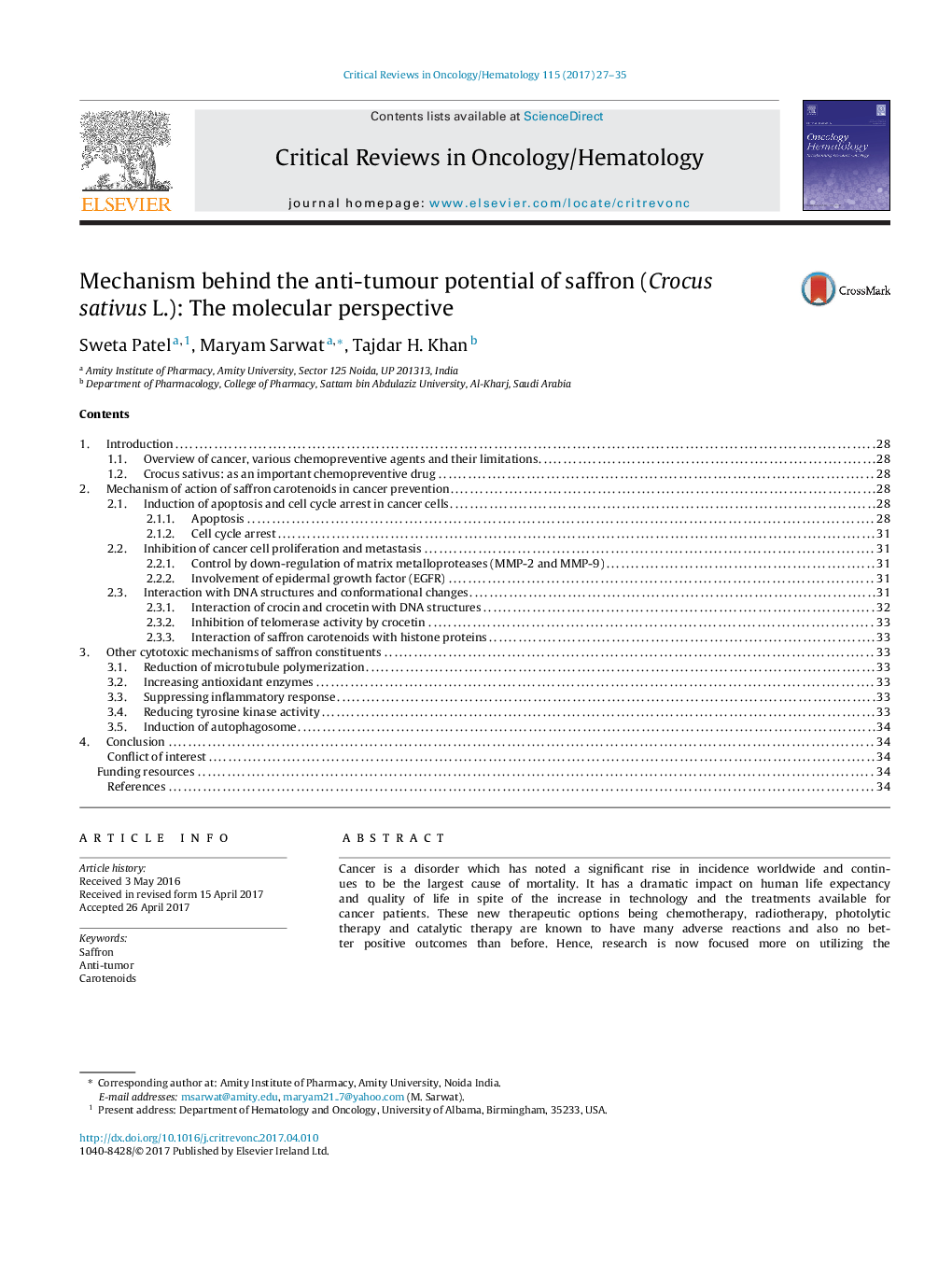| Article ID | Journal | Published Year | Pages | File Type |
|---|---|---|---|---|
| 5663997 | Critical Reviews in Oncology/Hematology | 2017 | 9 Pages |
â¢The emphasize is on the mechanistic aspect of the anti-tumour property of saffron.â¢Various mechanism involved in the anti-tumour activity of saffron has been elaborated.â¢Both in vivo and in vitro research work pertaining to the anti-tumour potential of saffron has been covered.â¢It gave a better understanding of the working of saffron on cancer cells.
Cancer is a disorder which has noted a significant rise in incidence worldwide and continues to be the largest cause of mortality. It has a dramatic impact on human life expectancy and quality of life in spite of the increase in technology and the treatments available for cancer patients. These new therapeutic options being chemotherapy, radiotherapy, photolytic therapy and catalytic therapy are known to have many adverse reactions and also no better positive outcomes than before. Hence, research is now focused more on utilizing the vast repertoire of traditional medicinal knowledge i.e. the use of flora for treatment of cancer rather than the use of chemicals. One such herb is the Crocus sativus L., commonly known as Saffron, rich in carotenoids â crocin, crocetin and safranal. Various studies have been carried out over the past few years to confirm the anti-cancer properties of saffron, both in vivo using animal models and in vitro using human malignant cell lines on various types of cancers with positive results. The proposed mechanism of actions has also been worked upon. This review is aimed to provide a brief overview on the anti-tumor potential of saffron focusing on the molecular mechanism involved.
